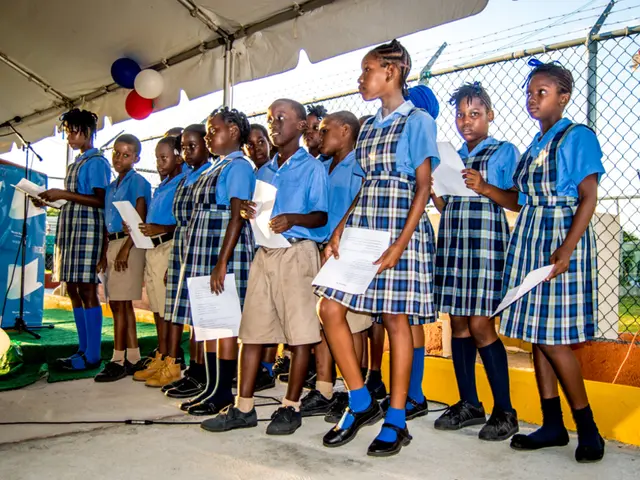Research Finds Advantage in Large Print Books for Young Readers' Reading Ability
Large Print Books Improve Reading Comprehension and Engagement Among Students
A new study conducted by Project Tomorrow and Thorndike Press has revealed significant benefits of large print format books for students in grades 4-12. The national literacy study, which included 1,500 students and 56 teachers and librarians across 13 U.S. schools, has demonstrated that large print books can make reading easier, more engaging, and ultimately lead to better literacy skills.
The study found that students reported improved reading speed and comprehension when using large print books. This improvement was observed not only among students reading at grade level but also among those reading below grade level, with 71% and 59% of teachers reporting improved Lexile scores, respectively.
Moreover, large print books were found to enhance memory and enjoyment, as students remembered more of what they read and found the reading process more enjoyable. This increase in enjoyment sometimes marked the first time students expressed such feelings about reading.
The study also revealed that large print books helped students read for longer periods and stay more connected to the text, thereby improving their reading stamina and focus. This improvement was observed in students learning English, those with reading comprehension challenges, students who are easily distracted, and students who are anxious about reading.
In the classroom, teachers reported a positive impact on their students' reading success when they switched to large print books. A vast majority of teachers (87%) reported a positive impact, and 55% of teachers saw increased comprehension among students diagnosed with ADHD.
One school, O'Neill Middle School in Downers Grove, IL, has seen a shift in student preference, with a majority of students choosing large print format books over traditional format when given the option. Similarly, students at Squires' school prefer print books over reading online for leisure reading.
The ease of implementation is another advantage of large print books. Once the books are available, implementing large print as a reading intervention requires no additional professional development. Audiobooks remain popular with students at Squires' school, providing an additional avenue for supporting individualised learning and personalising the teaching process.
Julie A. Evans, the chief executive officer of Project Tomorrow, expressed interest in the potential of large format books to increase reading scores. Evans suggests that offering large print books for students is a way to support individualised learning and personalise the teaching process.
The study, which was released by Thorndike Press, a division of Gale, highlights the potential of large print books to make reading more accessible and enjoyable for a wider range of students. With the benefits demonstrated by this study, it seems that large print books are set to play an increasingly important role in supporting students' literacy development.
[1] This paragraph summarises the key findings of the study and provides a brief overview of its potential impact on students' reading experiences and literacy skills.
Teacher engagement with large print books in their classrooms could provide professionals with valuable opportunities for digital professional development, as they adapt to include alternative learning resources.
Students who prefer large print books over regular format may find a greater sense of personal-growth and increased enjoyment in their education-and-self-development, fostering a lifelong love for reading.
By incorporating large print books into Google Classroom assignments, students could gain improved learning experiences from reading resources tailored specifically to their needs, further enhancing school literacy programs.
Although the study primarily focuses on the benefits of large print books, it is worth considering the potential impact on other mediums such as e-books and digital textbooks, as they may also serve to aid students' reading abilities and overall learning.
In light of the positive results from large print books for struggling readers, perhaps future research could explore similar approaches to further support the learning and personal-growth of students encountering challenges in traditional learning environments.




